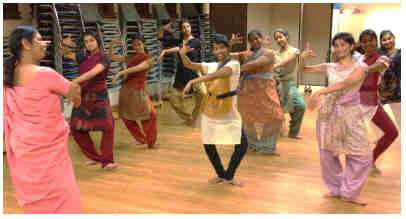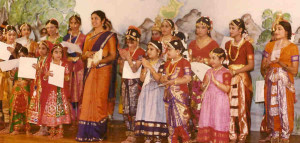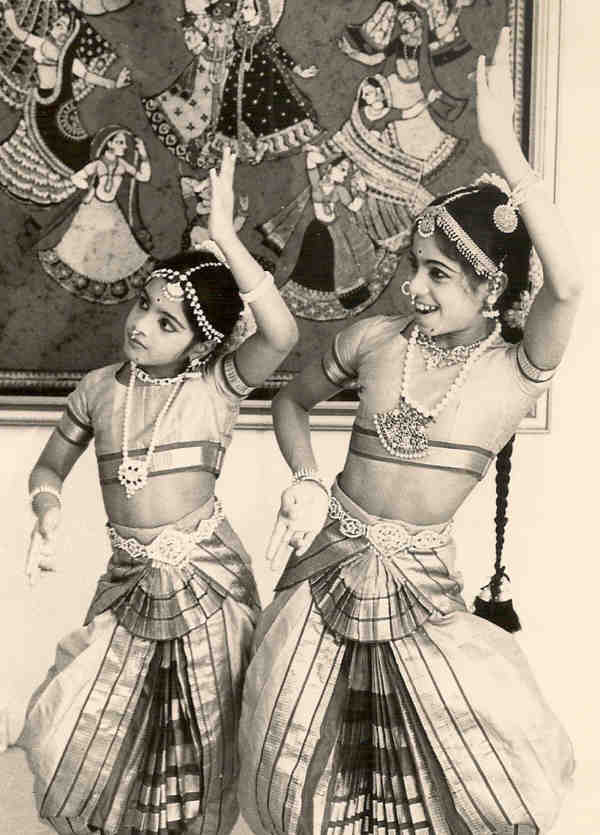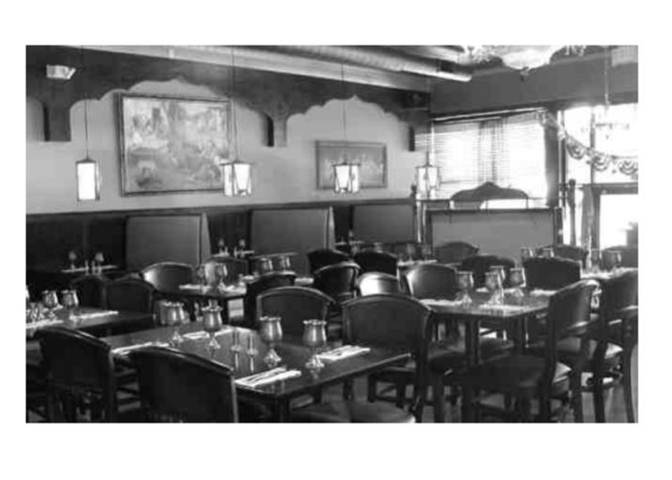Archive for category July 2013
China: Unintended Consequences of Progress
By Kollengode S. Venkataraman (July 2013)
This past March I was in China on work spending nearly a month in one place. It was not Beijing or Shanghai. I was in Huangdau, a third tier city, in the extended metropolitan region around Qingdao, a beautiful second tier city along the Yellow Sea. See the map.
The enviable economy of China with 10% growth year after year and lifestyles of those who benefited in the growth are well known. But the growth came with a price. In cities the skyline is often covered with smog. The evening sun looks like the full moon, and folks walk with masks over their face.
The Chinese government in the Mao Zedong era, alarmed at the rapid increase in population, enforced the draconian one-child-per-family policy. This contained the population growth. But as predicted, this policy led to married couples born in that era now in their 40s and 50s and both
working, having to take care of four elders – his and her parents. With longevity guaranteed because of genetics, lifestyle and eating habits, this poses serious social and economic problems in China where family ties and obligations are taken seriously.
\With the equivalent of Medicare and Social Security practically absent, the responsibility for elderly care in terms of money, time, and resources are on the single-son and single-daughter of the seniors. People powerful enough in the party, or who became rich enough in the economic boom, have the resources to meet their obligations. But middle-income families are under strain. Government is re-thinking its one-child-one-couple policy, partly because of the predicted shortage of work force down the road.
The one-child-one-family policy ensured the reduction and even reversal in population growth, but this did not address the Chinese preference for boys over girls. Nature unaided by technology for gender selection has kept the gender ratio over a narrow range, with around 105 boys for every 100 girls.
But with the marvels of modern technology for detecting the gender of fetuses—amniocentesis, ultrasound and digital imaging techniques—many married couples in China, both educated and not-so-educated, opt for terminating pregnancies if the child conceived is a girl. This gender selection has skewed the gender ratio. Now they have 120 boys for every 100 girls nationally. In pockets the gender ratio is skewed badly with 150 boys for 100 girls. The situation is identical in India, where they have 112 boys for 100 girls. However, in pockets of Punjab, Gujarat, Rajasthan, UP, and Bihar, far more boys are there for 100 girls.
Mara Hvistendahl in recent her book Unnatural Selection notes that the skewed gender ratio makes societies more prone to violence. “[T]he dearth of women along the frontier in the American West probably had a lot to do with its [the West] being wild. In 1870, the sex ratio west of the Mississippi was 125 men to 100 women. In California it was 166 to 100. In Nevada it was 320. In western Kansas, it was 768.”
The skewed gender ratio in China has led to an unintended consequence based on supply and demand.
I was waiting for my colleagues in the Crown Plaza Hotel in 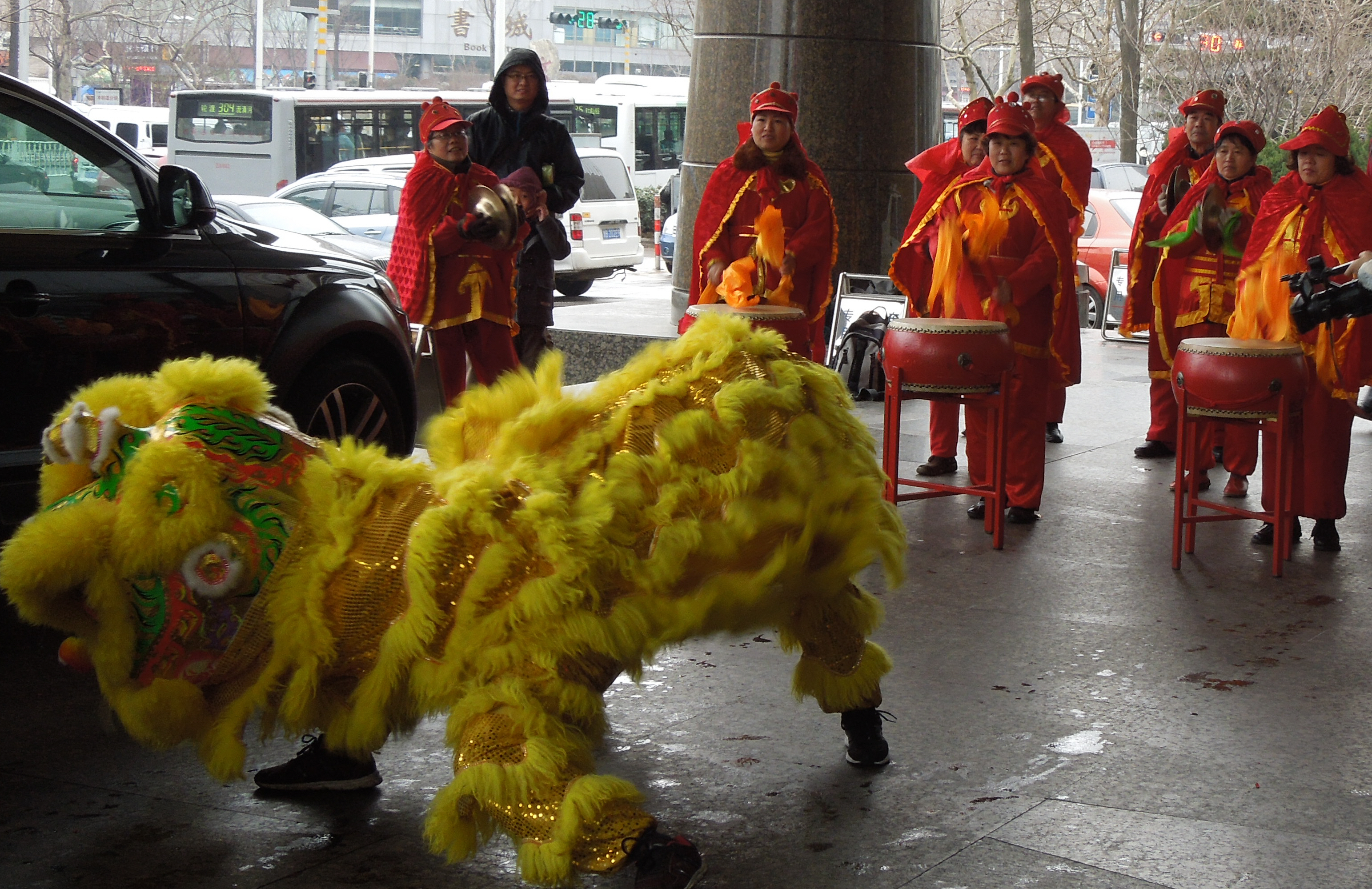 downtown Qingdao. It was chilly, windy and raining. I was standing outside the lobby and seeing—and hearing—a loud music band attired in bright red costume playing traditional music with cymbals and Chinese drums. A black Mercedes with flower decorations pulled in. The music became louder with Chinese dragon dancers joining in the merriment. The bride in Western bridal costume came out. With her was a man in his mid-thirties, He was balding with a receding hairline.
downtown Qingdao. It was chilly, windy and raining. I was standing outside the lobby and seeing—and hearing—a loud music band attired in bright red costume playing traditional music with cymbals and Chinese drums. A black Mercedes with flower decorations pulled in. The music became louder with Chinese dragon dancers joining in the merriment. The bride in Western bridal costume came out. With her was a man in his mid-thirties, He was balding with a receding hairline.
Chinese believe if it rains on the day of wedding, the wife will dominate  over her husband. My colleagues arrived to take me for lunch. Seeing the rain, they mockingly felt sorry for the groom. The wedding milieu was a good topic during lunch. I asked innocently, “Is the man in dark suit with the bride her uncle or elder brother bringing her to the wedding place?”
over her husband. My colleagues arrived to take me for lunch. Seeing the rain, they mockingly felt sorry for the groom. The wedding milieu was a good topic during lunch. I asked innocently, “Is the man in dark suit with the bride her uncle or elder brother bringing her to the wedding place?”
Surprised at my question, pat came the reply from one of my colleagues, “No. He is the groom!”
“Hmm. He looked old,” I said, “He is getting bald and he has receding hair. Don’t Chinese men get married in their mid twenties?”
This led to a lengthy discussion on the marriage scene among the professionals in today’s China.
As in other parts of the world, tradition runs deep in China. The Chinese Communist Party, trying for decades after the revolution, has ceased to erase traditions on life transitions such as marriage.
In China, it is traditional that the groom pays “bride money” to the bride in person with crisp currency notes. Checks and demand drafts are not accepted—they are against the tradition. Even fifteen years ago, the bride money was manageable—a few thousand renminbis (RMBs), the Chinese currency. $1= 6.3 RMB. The bride has to be satisfied that the man can support her.
Decades ago, the man took his new wife her into the home of his parents to live after wedding. Now things have become expensive, with classy expectations. China’s explosive prosperity is one reason. Another factor is the skewed man-made gender ratio. With a smaller pool of women available for a larger pool of men seeking partners, women are picky.
The typical monthly starting salary for a professional (accountant, lawyer, engineer, physician) in Huangdao is around 60,000 RMBs/year. Now, the bride money for professionals has increased several fold—100,000 RMBs or even more. This is almost twice the starting gross salary.
In addition, the brides, who are in short supply, also expect the grooms to have an apartment to move into after the wedding. And apartments are VERY expensive. A 100-sq.meter (1000 sq. ft), 3-BR apartment in Qingdao in a “desirable” neighborhood costs 800,000 to 1 million RMBs. The down payment is 20%, or 200,000 RMBs.
So, young Chinese professional men need 300,000 RMBs, just to get married, with their starting salary around 60,000 RMBs/year. And the expenses on the wedding day are also on the groom’s family. With normal cars (cost: 80,000 RMBs) — Jaguars are over 600,000 RMBs — becoming a necessity, young men are stressed out.
So, Chinese couples, after having their much-desired boy, not only start to save for his schooling/college, but also for helping their only adult son 25 years down the road with the bride money and apartment.
That explained why the groom at the Crown Plaza Hotel was in his mid-thirties with a receding hairline and was bald. He has been saving money for years for sure. And he was also spending time wooing picky Chinese women to consider him good enough to be their mate.
But this situation is not a panacea for Chinese young women. Even though they demand an apartment before marriage, the apartments are often registered only in the groom’s name. After all, his parents have financed it. But her assets are jointly owned.
But Chinese women today in general, and professional educated women in particular—much like young educated women everywhere—have become picky, sometime too picky for their own good. This is the same as what we see here in the US. Even after the success of the Feminist Movement and the economic security that comes with education, Ivy League women prefer to marry other Ivy Leaguers, and professional women choose other professional men as mates.
My colleagues also told me Chinese men are wary about professional women who come across too aggressive and ambitious. And for single professional women over 32 or 33, the pool of eligible, compatible, unmarried professional men is small and there are not too many to go around. It is a balancing act in the wooing game for the Chinese young men and women. It is quite stressful. The really rich men deploy paid agencies to screen potential candidates. Others depend on parents, relatives and friends to meet women.
If this is the situation for professionals in China, we can only imagine the challenges of the millions of the working poor in China.
The economic impact of this trend is huge. By one estimate, nearly 25% of their 8% annualized GDP growth, or 2%, is because of the demand for new housing and cars among working professionals. This demand sustains basic industries such as steel, cement, home appliances, tiles, bathroom fixtures, construction jobs, home decorations…
With far more men than women in the productive and reproductive age group in China, in the years to come, the married life of Chinese will be dominated by their wives, even if it does not rain on their wedding day.
===========================
An Alternative Critical View on Globalization
By M. D. Nalapat
Editor’s note: The author is vice-chair of Manipal Advanced Research Group and UNESCO peace chair, and professor of geopolitics at Manipal University, India. The article appeared first in China Daily in March, 2013. The Pittsburgh Patrika acknowledges China Daily’s permission to reprint the article.
In the 19th century, the British Empire was a source of pride in the United Kingdom, being a small island that took control of more than half the planet and converted its resources to its advantage. India’s view on the same empire is different, for it saw its share in the global economy fall from 24 percent to less than 1 percent from 1820, when the British began to establish themselves in India, to 1947, the year they left. [Editor’s note: The US experience here is no different. That is why we had a War of Independence in 1776.]
Similarly, the Opium Wars were a source of immense profit for UK merchants, helping huge conglomerates dominate business in Asia and elsewhere. However, for the Chinese people, the Opium Wars were a source of immense pain and the cause of social disintegration that was only reversed in 1949, when the Communist Party of China founded New China.
The reality is that the European experience of colonialism has almost always been a zero-sum game, in which the other side lost heavily in order to ensure gains for the colonizing power. Which is why it is not reasonable for the West to demand that the rest of the world accept its version of history and economic and political doctrines. The circumstances in each non-Western country are very different from those in the West, which is why imposing a Western model would result in a less than optimal outcome. [Note: See what is happening now Afghanistan, Iraq, and Egypt.]
If China has made such great progress, especially since the 1980s, it is because China rejected copying Western commercial institutions, creating instead a model that had a natural fit with Chinese experience and needs. Strangely, while admitting that the Chinese economic model has worked in China, where a purely Western version may have failed, some Western powers constantly criticize China for not adopting a fully Western model of democracy.
Western powers ensured their dominance in the two previous centuries by control of territory. These days, they seek the same outcome by seeking to make other societies believe that following the advice given by them is the best course.
In South America in the 1970s, much misery was caused precisely because governments there strictly followed the orders of the World Bank and the International Monetary Fund, both of which were, and still are, dominated by the West, with only a United States or an European Union national heading these so-called international organizations.
Indeed, to the West, international means the West. The so-called international relations programs taught in the West, which are unfortunately so popular with affluent students in China and India, teach subjects solely through the prism of Western interests. Those graduating out of such programs subconsciously begin to act and think in ways that promote Western interests, rather than that of their own countries. This is hardly surprising.
When the West refers to the international community, it refers only to itself. The views of people in China, India and other large non-Western countries are regarded as not having any worth. In the same way, “international media” refers only to the Western media and to their West-centric viewpoint, ignoring the views of the rest of the world.
Even globalization is taken to mean easier access to Western products, services and people in other markets rather than a genuinely international free flow across borders. The European Union in particular has made entry into its own markets as difficult as possible for companies based in Asia, while constantly putting pressure on this continent to open up markets to the EU. Rather than a Western zero-sum approach, what the world needs is an Asian win-win approach, which is why the rest of the world needs to avoid falling into the trap of judging their own interests solely in the terms set for them by the West. Each country has the right to its own perspective and the right to craft its own path to progress.
India provides an example of a country whose leadership uncritically accepted Western systems when more local solutions were required. Although a democracy, the legal and administrative system in India is largely what it was during British rule. The Indian Penal Code and the Indian Police Act, for example, have not changed for more than a century. Democracy is good for making decisions taking different groups’ interests into consideration, but India has developed at a slow pace. In 1949, the Indian economy was twice as big as China’s. Today, it is less than a third the size.
It costs millions of dollars to fight a parliamentary election in India and in the US, thereby ensuring that only those with access to money will be elected, the poor are effectively excluded.
[Editor’s note: Another Indian example: In the last thirty years, India has transplanted the US healthcare system based on pay-per-service with disastrous consequences for the working class Indians. While this pay-per-service system is being challenged in the US itself both for its efficacy and high costs, it is going full-steam ahead in India with nobody to supervise the performance, pricing, and corrupt marketing practices of doctors, diagnostic labs, and pharmaceutical companies.]
While Western-style democracy may suit Western countries, other countries need to ensure that systems are created that meet local needs. A one-size-fits-all approach makes no sense, except for the West, because if other countries slavishly follow the Western model they will be handicapped from competing with the West.
During the 1997 financial crisis in Asia, which was caused by Western currency speculators, India and China both escaped as both refused to adopt the measures that Western governments were urging them to do. In contrast, countries such as Thailand, which faithfully implemented Western prescriptions, suffered badly. Western prescriptions are good —but only for the West.
Non-Western countries should take care to ensure that their national policies do not get framed in a way that helps outside powers at the expense of their national interests. Democracy implies diversity, not the total adherence to the concepts and models that Western countries promote as universal, but which are really to their advantage. Each country has not only the right but the duty to ensure that diversity is protected and that models suited to their own people and their own history get adopted.
Confidence in one’s own people is essential to make the sort of immense progress that China has achieved over the past three decades. Such confidence cannot be transplanted from the outside. It has to develop from within a country and its unique people.
======================
Shakuntala Devi – A Remembrance
By Samar K. Saha
e-mail: sksaha@uss.com
I first met Shakuntala Devi ‘Banerji’ in 1988 at her Manhattan apartment. She remained an enigma to me all these years. In normal conversations, appearance, and discussions, she was full of life — an extrovert, witty, very social, simple, down-to-earth, comfortable in any setting, and a 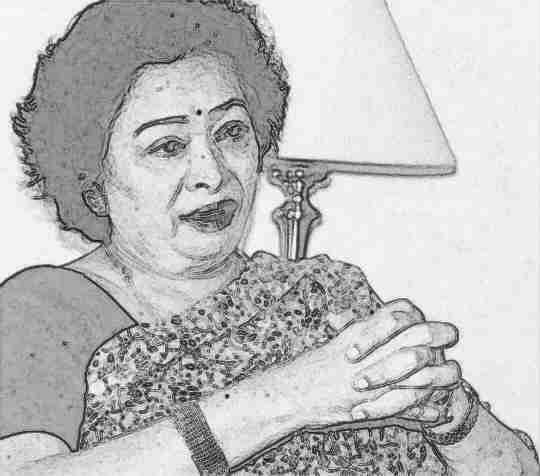 loving person. She treated me like her younger brother in distress during later meets. I could feel that whiff of affection each time I saw her. She passionately talked about her love for Fred Astaire–Ginger Rogers movies, cooking, and reading. Nothing showed any trace of a supernatural mind. She simply described her ability as a ‘God’s Gift’ when asked — just as another great Indian mathematician Ramanujan had once remarked about himself.
loving person. She treated me like her younger brother in distress during later meets. I could feel that whiff of affection each time I saw her. She passionately talked about her love for Fred Astaire–Ginger Rogers movies, cooking, and reading. Nothing showed any trace of a supernatural mind. She simply described her ability as a ‘God’s Gift’ when asked — just as another great Indian mathematician Ramanujan had once remarked about himself.
The Beginning and the Fame: Shakuntala Devi was born in Bangalore, India, to an orthodox Kannada Brahmin family on November 4, 1929. Her father chose to be a circus acrobat. Devi’s mathematical gift first demonstrated itself while she was doing card tricks with her father when she was three. Those present noticed that she “beat” them by memorizing the cards rather than by sleight of hand. Devi was quoted as saying. “At the age of 6, I gave my first major show at the University of Mysore (India).” The word spread quickly of her supernatural capability.
Shakuntala Devi went on tours around the world starting in the ‘50s and performed in a number of institutions, theaters and on television up to the early 80’s. During one such trip in the early 50’s, she met Albert Einstein. A reporter recounted the meet from Einstein’s note to Devi. Albert Einstein says in the note, “I asked this woman a question which I take three hours to solve because I have to follow a whole method …. I know that nobody can do it in less time than I can… And the whole procedure has to be followed. The figures were so big that it took the whole board for her to write the answer. And before I had even finished the question, she started writing the answer.” Einstein was absolutely puzzled. He asked, “How do you do it?” Devi said, “I don’t know … — it simply happens. You ask me and figures start appearing before my eyes, somewhere inside. I can see 1, 2, 3, and I just go on writing…..”
Live Demonstrations – Some Exceptional Examples:
Guinness Book of Records contains many other recorded feats of Devi. Here are some:
• In January 1977, Devi received a standing ovation from an audience of erudite mathematicians at the Southern Methodist University in Dallas, Texas, when she extracted the 23rd root of a 201-digit number, at the fifty-second mark, with the correct answer being ’546372891′. She was faster than the fastest computer, UNIVAC’s time of 62 seconds.
• In June, 1980, Devi demonstrated the multiplication of two 13-digit numbers: (7,686,369,774,870) X (2,465,099,745,779), picked randomly by the Computer Department of Imperial College, London. This event is mentioned in the 1995 Guinness Book of Records. Her correct answer of 18,947,668,177,995,426,462,773,730 came in just 28 seconds.
• In 1988 Devi visited Stanford University at the invitation of Professor Arthur Jensen. Jensen, an educational psychologist, tried to understand the source of Devi’s abilities. According to Jensen, ‘’Devi solved most of the problems faster than I was able to copy them in my notebook.’’ Jensen could only suggest that Devi perceived large numbers differently from others. ‘’For a calculating prodigy like Devi, the manipulation of numbers is apparently like a native language, whereas for most of us, arithmetic calculation is at best like the foreign language we learnt at school,’’ he wrote.
Family Life: Shakuntala Devi married Paritosh Banerji, a senior IAS officer from Kolkata in the mid-1960s. They had a daughter, Anupama Banerji, from this marriage. The marriage ended in divorce in 1979. In the 1980’s Shakuntala Devi returned to Bangalore with her daughter, where she continued with book writing. During this period she entered the mystic world of astrology, offering astrological advices to people, including celebrities and politicians. She also set up an ‘Educational Foundation Public Trust’ to promote mathematical, astrological and philosophical studies.
With severe respiratory problems, she was admitted to a hospital in Bangalore on April 3, 2013. Her health began to deteriorate rapidly after her kidneys failed and she breathed her last on April 21, 2013.
I often wonder who was she?
Major Writings:
Critically appraised Puzzles to Puzzle You is one of Shakuntala Devi’s best works for aspiring and budding mathematicians.
Perfect Murder is the tale of a successful lawyer-turned-killer and is regarded as a fine work of fiction.
The World of Homosexuals, published in 1977, considered a courageous work on a controversial issue and was included in the ‘Top 100 Books by Indian Authors’ in 2005.
The Wonderland of Numbers published by Orient paperbacks in 2006 is a fictional story of a girl, Neha and her fascination with numbers.
=======================
Caring for Values in Our Pursuits
By Sriram Palghat, Upper St. Clair, PA
e-mail: palghat@gmail.com
Recent incidents such as the shooting in the Connecticut school and the brutal gang-rape of a woman in New Delhi made me wonder what is driving men to commit such unimaginably violent acts?
Our busy, materialistic society is stretching us thin, not giving us any time to think of anything other than chasing our worldly pursuits. Along the way some people discard their moral and ethical groundings.
Religion is important in upholding the moral and ethical values of a society. However, men and women today are hardly finding time to even think of religion and values. An example of this is the closing down of churches in the US due to lack of interest and faith among younger generations. Technology is not helping the situation either. Smart phones and pagers make people think of work even in sleep.
is Holiness the Dalai Lama says, “Because… individuals [in society] derail from their values and behave negatively, there is more and more madness today. If their numbers increase, all of society will suffer. If we utilize and understand religious traditions properly, individuals benefit, and so can society as a whole.”
The question we must ask ourselves is, “Are we promoting the material-oriented dynamics without caring too much about the need for nurturing value-oriented lifestyle?” It is important for people to pause from time to time and think of the values we pursue. Every individual owes this time of reflection to oneself and to society at large. Many religious organizations are organizing religious events and retreats, providing us triggers to reflect on our pursuits.
n Pittsburgh, the Chinmaya Mission is organizing a Bhagavata Saptaah from Sunday, August 11 to Sunday, August 18 at the Chinmaya Sanjeevani in Monroeville. In this 8-day event, you will listen to stories from the Bhagavatam discussing ethical issues and conflicts that are as relevant today.
Opportunities like this help us to recognize how we can incorporate positive values into our lifestyle to find peace within ourselves so that we can find peace around ourselves. This is a great opportunity for us to unplug from our stressful daily aggravations and get immersed in listening to the stories from our epics and get rejuvenated.
Amidst the busy lifestyle of the current society, as Seekers of Truth, we need to make an effort to set aside some time for such events. We all need triggers to bring about desirable changes in our lives.
=========================
Guru Jaya Man’s 100 Arangetrams
By S. V. Krishnaswamy, Baltimore, MD
e-mail: krish15146@yahoo.com
Editor’s Note: S. V. Krishnsawamy lived in Monroeville for very many years before moving to Maryland. He interviewed Jaya Mani for the Patrika in 2003. He talked to Jaya recently on her 100th Arangetram on various subjects seemingly disjointed, but all related to, arangetrams.
Seeing one hundred students through their arangetrams is an achievement for any dance teacher anywhere. More so in the Pittsburgh metro area with barely 15,000 Indians. In June, Jaya’s 100th student had her arangetram. Thirty-five years ago, in 1971 with help from Rajashri Rajgopal (who lives in Northern Virginia now), Jaya started teaching Bharatanatyam with six students. Now, with over six dance teachers here, Jaya continues with over 100 students, taking three to four students to arangetram every year. It has been a long and exhilarating journey for Jaya. That her students trace their heritage to almost every part of India is a testimony to Jaya Mani as a teacher.
Seamlessly Integrating Technologies: These days Jaya encourages her students getting ready for arangetram to do their own web searches to get the details of the ragam, talam, composer and other information about the songs. Then she explains the meaning of the lyrics, their background and context. This allows them to be better prepared than before the advent of the web resources.
Grooming Future Teachers: When asked if she is grooming any of her students to become a teacher, Jaya says, “Some students after arangetrams continue with advanced lessons from me. If they have the commitment and the rigor to teach, I encourage them. One of my students, Shobita Ravi, is teaching in Wexford.”
Before coming to the US, Jaya taught her niece Bharatanatyam in Chennai. After arangetram, her niece studied nattuvangam (the Tamil technical term for choreography) in the Iyal Isai Nataka Manram in Chennai. She is teaching Bharatanatyam in Melbourne, Australia, where her first student’s arangetram is coming soon. Jaya will be presiding over her first grand-student’s arangetram there. Another milestone for Jaya.
Preserving the Dance Repertoire: Jaya tries to preserve the arangetram music and actual performance by converting old audio & video cassettes into DVDs, MP3, I-tunes etc. She was disappointed that several old tapes were spoiled in storage. Asked if she is planning to make her collection of music available for young teachers, Jaya says she is willing to make them available for her students if they are is serious about using them in any performance.
Jaya became emotional recalling that her father, who supported her throughout her dancing career, saw several of her students’ arangetrams in person in Pittsburgh.
Challenges in Using Live Music: “I have accomplished most of what I set out for myself when I started teaching three decades ago,†She says, “My only disappointment is that I am not able to routinely incorporate live orchestra in arangetrams.†This is because of the logistical constraints and the winter weather. She lives in Slippery Rock, more than an hour’s drive from Pittsburgh. However, she is happy that she supports musicians in Chennai using their recorded music in arangetrams.
With so many arangetrams completed, her students have a number of dance dresses and jewelry. When asked what they do with these when they no longer need them, Jaya admits, “It is the parents’ decision. Some want to keep them as souvenirs, and some lend them for other children.” Some parents and Jaya herself, have lent the dresses to students going through arangetrams.
On the General Baharatanatyam Scene Today: Isai velalar nattuvanars (choreographers in Tamil), have composed superb varnams, padams and tillanas for dance. Nattuvanars were all men—the term is masculine in Tamil. Till the mid-20th century, nattuvanars held a pre-eminent place in arangetrams. However, with the mostly English-educated upper class women taking over choreography, we witness the decline of nattuvanars. They are replaced by those who do only the Sollu-kattu, and yet are said to do nattuvangam! Now he/she is one in the music ensemble instead of being at the center of the dance program.
However, veterans like Adyar Lakshmanan, C V Chandrasekhar, the Dhananjayans, Narasimhacharis, and K J Sarasa carry on the old-time nattuvangam. Similarly, even though dancers like Balasaraswathy, Rukmini Devi, and Padma Subramaniam have composed Varnams and Padams, they are rare. Today’s mostly English-educated choreographers do not have the skills — Indian languages, grasp of history and mythologies, epics, philosophy, and literary skills and poetical talent — required to compose lyrics. So, I asked Jaya, “What is the contribution of today’s choreographers for the dance repertoire?”
While recognizing the lack of compositions by dance teachers/choreographers themselves, Jaya is confident the young composers will fill the gap. She gave an example of her interaction years ago with a young violinist who composed music for her using the works from Tamil Bhakti literature and from contemporary poets. He is B V Raghavendra Rao, a leading violinist now. Jaya feels modern-day choreographers need to identify such talents and work with them.
“Why is that today’s dance teachers are reluctant to use the excellent classically tuned film songs by poets like Udumalai Narayana Kavi, Pattukkottai Kalyanasundaram, Kannadasan, and others in recitals?”
Jaya: “If the music and lyrics suit the dance theme, then surely one can use their songs.” She gave examples of lyrics of film songs she helped her students to use for fundraising events.
Taking Bharatanatyam to Universities Here: Jaya is now teaching Bharatanatyam at the Slippery Rock University one semester a year. Â In her class typically over thirty American students register.
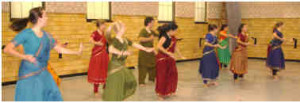
“What can anyone can learn in one semester?” I asked.
Jaya unhesitatingly says, “These are dedicated dance majors. They quickly grasp the basic adavus, jatis and learn alarippu, kolattam and few basic dance pieces in one semester.” Continuing, she said, “These students go to Chennai during the summer to get immersed in the Indian dance scene there under the guidance of Revathy Ramachandran.â”
On Saturday, June 15, Jaya’S students celebrated her contributions to our community in a function held at the S.V. Temple.
We congratulate Jaya for implanting the nuances of Indian performing arts in the minds of our youngsters born and raised here, not an easy task by any means. We also thank her for nurturing in our youngsters the culture, and the very core of our faith that is woven into the dance repertoire. We wish her well for many more arangetrams.
=========================
India-Born Sri Srinivasan Appointed to the US District Court of Appeals
In May, Sri Srinivasan, 46, the India-born (Chandigarh, Punjab), Principal Deputy Solicitor General for the US Government, was approved  for the US Court of Appeals for the District of Columbia (popularly shortened to the DC Circuit) by the US Senate by an overwhelming bipartisan support of 97 to 3. He was nominated for the court by President Obama in June 2012. The DC Circuit Court’s full bench has eleven judges, but currently, even with the appointment of Srinivasan, three are still vacant. Â
for the US Court of Appeals for the District of Columbia (popularly shortened to the DC Circuit) by the US Senate by an overwhelming bipartisan support of 97 to 3. He was nominated for the court by President Obama in June 2012. The DC Circuit Court’s full bench has eleven judges, but currently, even with the appointment of Srinivasan, three are still vacant. Â
He is the first Indian-American to be appointed to the US Courts of Appeals. Of all the federal courts of appeals — there are thirteen of them nationwide – the DC Circuit Court is an important one even though it covers the smallest geographic area. This is because of its strategic location in Washington D.C., the seat of federal government. Other federal courts of appeals have jurisdiction over much larger area covering several states. The US Court of Appeals District 9, for example, covers California, Nevada, Arizona, Oregon, Washington State, Idaho, and Montana.
The DC Circuit Court has the responsibility of directly reviewing the decisions of many federal independent agencies of the United States government based in the national capital. Given the broad areas over which federal agencies have power, the judges of the D.C. Circuit play a pivotal and central role in affecting national U.S. policies and laws. The very fact that four of the current nine US Supreme Court justices — Justices Roberts, Scalia, Ginsburg, and Thomas — are from the DC Circuit Court is enough to stress its importance.
Srinivasan grew up in Kansas, where his father was a mathematics professor at the University of Kansas. He is a Stanford University alumnus. His bachelor’s degree, MBA and law degrees are all from Stanford. He clerked for US Supreme Court Justice Sandra Day O’Connor. Srinivasan has argued twenty cases before the US Supreme Court. Now he will be spending the next several years hearing cases at the DC Circuit Court. As Jeffrey Toobin, who follows the US Supreme Court appointments closely, speculated in The New Yorker before Srinivasan’s senate approval, “If Srinivasan passes this test and wins confirmation [which, he did], he’ll be on the Supreme Court before President Obama’s term ends.â€Â                         — By K. S. Venkataraman
The New All India in Oakland Offers A Wider Choice of mIndian Cuisine
 All India (Ph: 412 681 6600) at 315 North Craig Street close to the intersection of N. Craig and Centre offers a wider choice of Indian cuisine.  In addition to the well-known Punjabi items in Indian restaurants, All India offers several popular Gujarati and South Indian items such as dosas, vada, idly, undhiya, in addition to South Indian and Gujarati Thalis.
The restaurant also has a cordoned-off area for private functions and meetings that can seat up to sixty people
The decor of the restaurant is very Indian, including the serving vessels for the items ordered. And the seating is spacious for you to carry on conversation without others seated close-by hearing or listening.
The owners, Didar Singh and his wife Manjit Kaur are well-known in Pittsburgh in the Indian food business. Mr.Singh owned the India Garden on Bates Street till two years ago. They also own the Bombay Food Mart (Ph: 412-687-7100) at 4605 Center Avenue, located within 50 yards from All India.
Who Said Our Ancestors Had It Easy?
By K. S. Venkataraman
Living has its stresses. Without them, we can as well be dead. But these days, with total self-absorption and self-pity, we attribute our difficulty to “modern†times, fast-paced life, technology, and careers. In saying this, we subliminally imply that the lives of our agrarian ancestors were placid. However, contrary to our belief, their agrarian lives had their own overwhelming demands making their life miserable.
How do I know? Well, I was reading an Tamil anthology of small literary works. The authors of these works are not known. From the vocabulary and imagery used and the construction of the verses, scholars deduce this work cannot be earlier than a two or three centuries earlier to our times. You need to remember that Tamil has a well-documented literary history dating back to at least more than 2300 years. Here is a verse by an unknown farmer-cum-poet describing his helplessness:
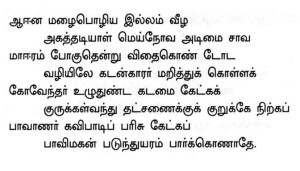
(Source: Viveka Chintamani, commentary by Padmadevan, Karpagam Puttaga-alayam, Tyagaraya Nagar, Chennai, 2006, 200 pp).
If you can read Tamil, you may enjoy the wry, cynical humor. If you do not know Tamil, here is my attempt to render the general contents and thrust of the verse in English:
Cattle in my barn groan in labor pain, My roof is leaking badly in the pouring rain. As I hurry to my drying moist fields with seeds for sowing, My darling wife is indisposed, my good farm-hand lies dying, Creditors for unpaid bills, far away I view; And the king’s men are with me to collect the taxes due. The pandit comes for his teaching fee making matters worse*, While folk singers are praising me to get their usual purse. The pile of problems on my head is making me to gasp, It’s something impossible for outsiders to grasp.So, do not for a moment think our ancestors had it easy, and do not wallow in self-pity that only you and your generation are having a stressful life. Agrarian life was not easy either. If rich landlords had it easy then, people today living off their parents’ wealth also have it easy today.
*Seeing a solitary Brahmin waling towards you when you leave on a mission is considered a bad omen.
 =====================


